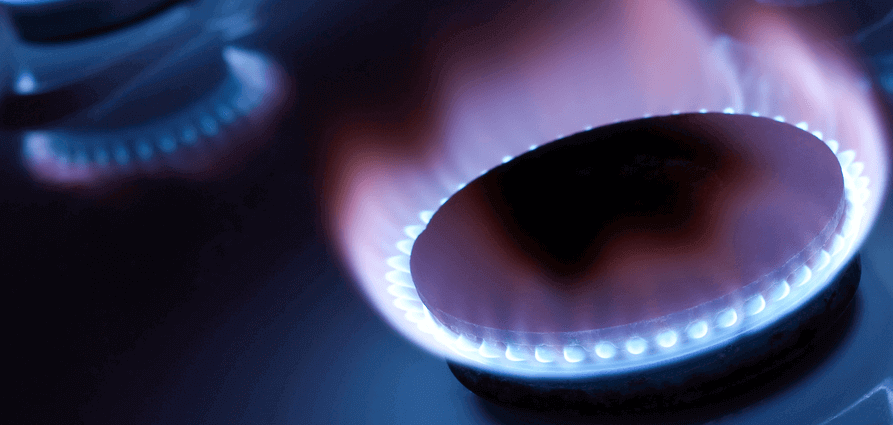Canstar Blue explains what a gas leak is and how to detect one in your home. We also highlight some of the symptoms associated with gas leaks, as well as tips on how to prevent them.
There are so many uses for gas in the home. Whether it’s for cooking, heating or hot water, gas usage in the home isn’t uncommon in the average Australian household. But unfortunately for households that do use gas frequently, there comes an increased potential for gas leaks.
Undetected gas leaks can cause carbon monoxide levels to build in the home, which can result in sickness, house fires or even explosions. While there are things that you can do to prevent a gas leak, being able to identify if there is a leak is also important because early detection is key.
That’s where we come in. In this Canstar Blue guide, we outline all the tell-tale signs of a gas leak in the house and share what you should do if you suspect a leak. We also reveal some tips and tricks to help you prevent any potential leaks from occurring in your home.
On this page:
What is gas leakage?
A gas leak is when there is an unintended leak of either natural gas, LPG or other gaseous products from a pipeline, tank or other containment into an area where gas should not be present. Leaks can occur if a pipe or tank is damaged, worn down, corroded, the joint seal is weak or the appliance is not installed or maintained correctly. It is important to know how to identify a gas leak as it could cause sickness, a fire or explosion if left undetected.
Gas leak symptoms
A gas leak can cause a variety of physical symptoms in both humans and animals, due to the reduction of oxygen in the air and potential carbon monoxide poisoning. Some slow gas leak symptoms may include:
- Dizziness
- Feeling sick or nauseated
- Headaches
- Fatigue or drowsiness
- Irritation to eyes, throat or skin
- Humans and pets getting sick at the same time
- Chest pains
- Loss of consciousness.
An easy way to tell if your symptoms may be caused by a gas leak is to leave the house. If you start to feel better, then it is time to call in the professionals.
Plants can also be a good indicator for potential gas leaks in the home. If you’re noticing more dead houseplants than usual, it may be the result of a potential gas leak – or simply a sign that you do not have a green thumb!
How to detect a gas leak
If you’re smelling rotten cabbage or rotten eggs, then this might be a sign you have a gas leak. As LPG gas is naturally odorless, ethyl mercaptan is added to its formula to help aid detection of leaks. Because of this, during most gas leaks, your nose will typically be the first thing to alert you to any potential issues. Other ways to detect a gas leak include;
- Listen for a hiss or whistling noise: Turn off anything that makes noise (such as the TV or your phone) and really listen for any kind of hissing sounds that could be gas escaping your pipes or appliances.
- Check gas appliances: Generally, gas appliances such as stoves give off a blue flame. This is an indicator that there is sufficient oxygen in the air for proper combustion. If the flames are orange or red after it has been lit, this indicates trouble.
- Soapy water test: Make a concentrated mixture of a teaspoon of detergent to one cup of water and apply to wherever you suspect a leak. If bubbles form, that indicates that gas is escaping and that you should turn it off and evacuate. This test can be useful but it is not conclusive, even if you don’t see bubbles. If you have suspicions then it is always better to act on them and get the whole thing checked out to be safe.
- Detectors: Natural gas leak detectors are the surest way to identify a natural gas leak. Carbon monoxide detectors are also useful. While these detectors are not specifically designed for gas leaks, they do alert you to elevated carbon monoxide levels that could be the result of gas leaks or air quality issues, before you risk exposure.
- Higher-than-normal gas bills: While increased prices may not necessarily be a sign of gas leaks, increased usage amounts may be. Get into the habit of comparing your gas consumption to the usage for the same time in the previous year. Unless something dramatic happened to change your household’s usage, such as additional people moving in or a cold snap in the weather explain the increase. If it is a big difference then it is probably a good idea to get your gas connection or appliances checked out.
What to do if you suspect a gas leak
If you suspect a gas leak, you should turn off the source of gas (either the appliance or at the meter of the gas bottle) and evacuate the building. Once in a safe location, call a gasfitter for assistance. If you have any suspicions, it is best to leave the premises and not re-enter until it is deemed safe to do so by a professional. It is always better to be safe than sorry!
In the case of a fire, immediately evacuate and call emergency services.
You might also be interested in:
How to prevent gas leaks
Using gas-powered appliances in the home doesn’t need to be all doom and gloom. And there are measures you can take to help you use these kinds of appliances safely. Some of the steps you can take to prevent potential gas leaks include;
- Installing detectors: It is a good idea to have detectors installed in your home, to be proactive about detecting any potential issues. This way, you can identify the issue, and have it fixed before it causes any major damage to you, your pets or your house. Regular maintenance of these detectors, such as changing batteries when required and testing them to make sure that they would be effective if a leak did occur, is also important.
- Get your appliances serviced: Regular servicing of appliances is another key way to prevent gas leaks. It is suggested that gas heaters should be serviced at least every two years. Not only does this ensure that they are running safely but also that they’re running efficiently – so that you’re getting the most out of your appliance.
- Ensure the home is sufficiently ventilated: Particularly with unflued appliances, ensuring that you allow sufficient ventilation is key – not just for gas leaks but also to avoid the build up of anything that is emitted from the everyday workings of the heater.
- Have certified technicians install any new appliances: Incorrectly installed appliances are a common cause of gas leaks. A professional can help avoid appliance and system damage as well as ensuring that the appliance is connected correctly.
It is always better to be safe than sorry so if you do suspect that something is wrong, make sure to bring in the professionals. That way if there is a problem, it can be fixed and if there isn’t, then you can have peace of mind knowing that it has all been checked out.
Compare cheap gas plans
Gas Plans Compared in VIC
Here are some of the cheapest gas deals on our database for VIC. These estimated annual costs are based on the Australian Gas Network in Melbourne and yearly gas usage of 29,830MJ, but prices will vary depending on your circumstances. We show one product per retailer, listed in order of lowest estimated cost. This table includes products from referral partners†. Our database may not cover all deals in your area, and please check retailer websites for up to date information.
Gas Plans Compared in NSW
Here are some of the cheapest gas deals on our database for NSW. These estimated annual costs are based on the Jemena Gas Network in Sydney and yearly gas usage of 18,542MJ, but prices will vary depending on your circumstances. We show one product per retailer, listed in order of lowest estimated cost. This table includes products from referral partners†. Our database may not cover all deals in your area, and please check retailer websites for up to date information.
Gas Plans Compared in WA
Here are some of the cheapest gas deals on our database for WA. These estimated annual costs are based on the ATCO Network in Perth and yearly gas usage of 7,672 (units), but prices may vary depending on your circumstances. We show one product per retailer, listed in order of lowest estimated cost. This table includes products from referral partners†. Our database may not cover all deals in your area, and please check retailer websites for up to date information.
Gas Plans Compared in SA
Here are some of the cheapest gas deals on our database for SA. These estimated annual costs are based on the Australian Gas Network in Adelaide and yearly gas usage of 11,875MJ, but prices will vary depending on your circumstances. We show one product per retailer, listed in order of lowest estimated cost. This table includes products from referral partners†. Our database may not cover all deals in your area, and please check retailer websites for up to date information.
Gas Plans Compared in QLD
Here are some of the cheapest gas deals on our database for QLD. These estimated annual costs are based on the Australian Gas Network in Brisbane and yearly gas usage of 6,842MJ, but prices will vary depending on your circumstances. We show one product per retailer, listed in order of lowest estimated cost. This table includes products from referral partners†. Our database may not cover all deals in your area, and please check retailer websites for up to date information.
Original reporting by Kelseigh Wrigley
Image Source: CCat82/Shutterstock



Share this article